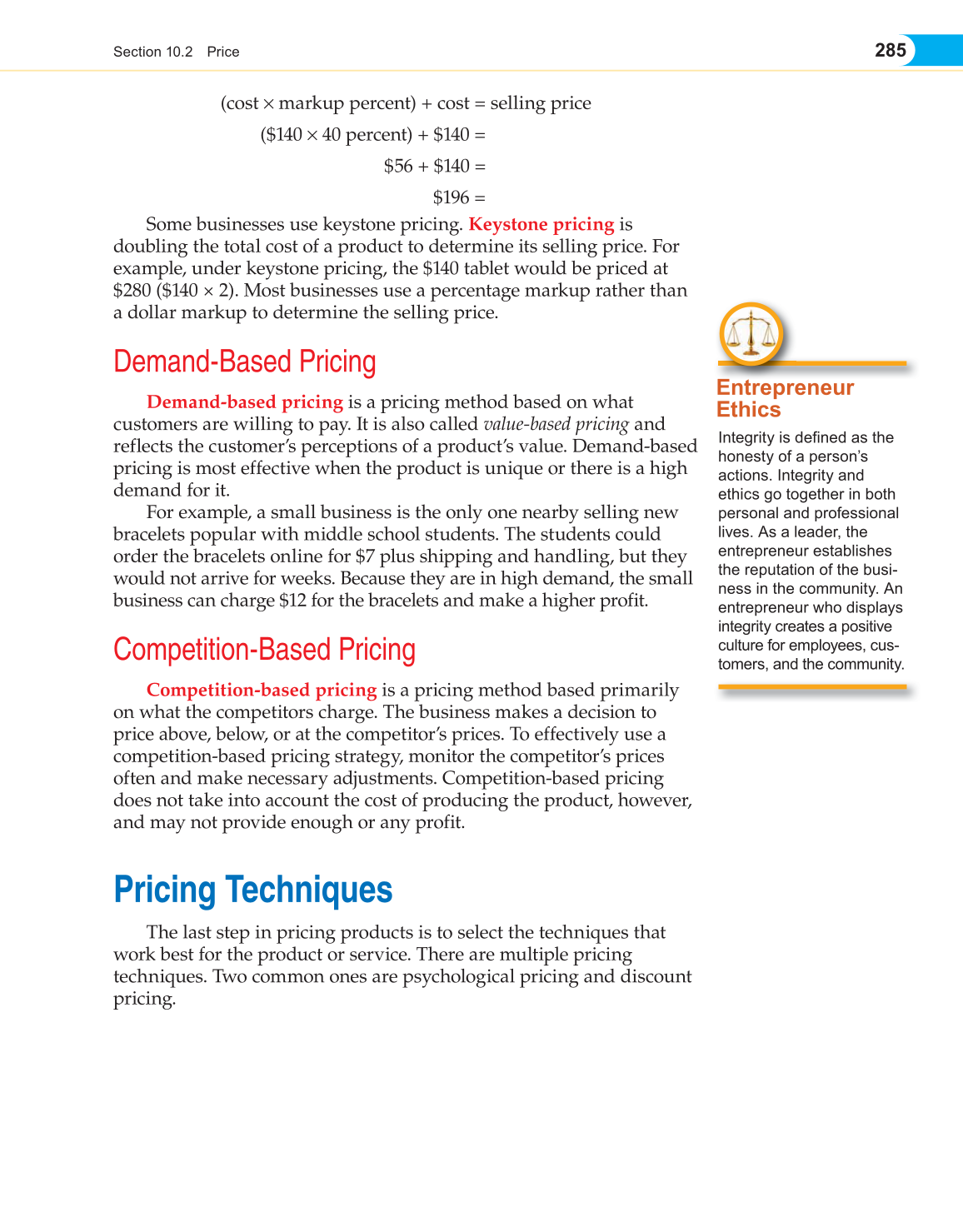285
Section 10.2 Price
(cost × markup percent) + cost = selling price
($140 × 40 percent) + $140 =
$56 + $140 =
$196 =
Some businesses use keystone pricing. Keystone pricing is
doubling the total cost of a product to determine its selling price. For
example, under keystone pricing, the $140 tablet would be priced at
$280 ($140 × 2). Most businesses use a percentage markup rather than
a dollar markup to determine the selling price.
Demand-Based Pricing
Demand-based pricing is a pricing method based on what
customers are willing to pay. It is also called value-based pricing and
reflects the customer’s perceptions of a product’s value. Demand-based
pricing is most effective when the product is unique or there is a high
demand for it.
For example, a small business is the only one nearby selling new
bracelets popular with middle school students. The students could
order the bracelets online for $7 plus shipping and handling, but they
would not arrive for weeks. Because they are in high demand, the small
business can charge $12 for the bracelets and make a higher profit.
Competition-Based Pricing
Competition-based pricing is a pricing method based primarily
on what the competitors charge. The business makes a decision to
price above, below, or at the competitor’s prices. To effectively use a
competition-based pricing strategy, monitor the competitor’s prices
often and make necessary adjustments. Competition-based pricing
does not take into account the cost of producing the product, however,
and may not provide enough or any profit.
Pricing Techniques
The last step in pricing products is to select the techniques that
work best for the product or service. There are multiple pricing
techniques. Two common ones are psychological pricing and discount
pricing.
Integrity is defined as the
honesty of a person’s
actions. Integrity and
ethics go together in both
personal and professional
lives. As a leader, the
entrepreneur establishes
the reputation of the busi-
ness in the community. An
entrepreneur who displays
integrity creates a positive
culture for employees, cus-
tomers, and the community.
Entrepreneur
Ethics
